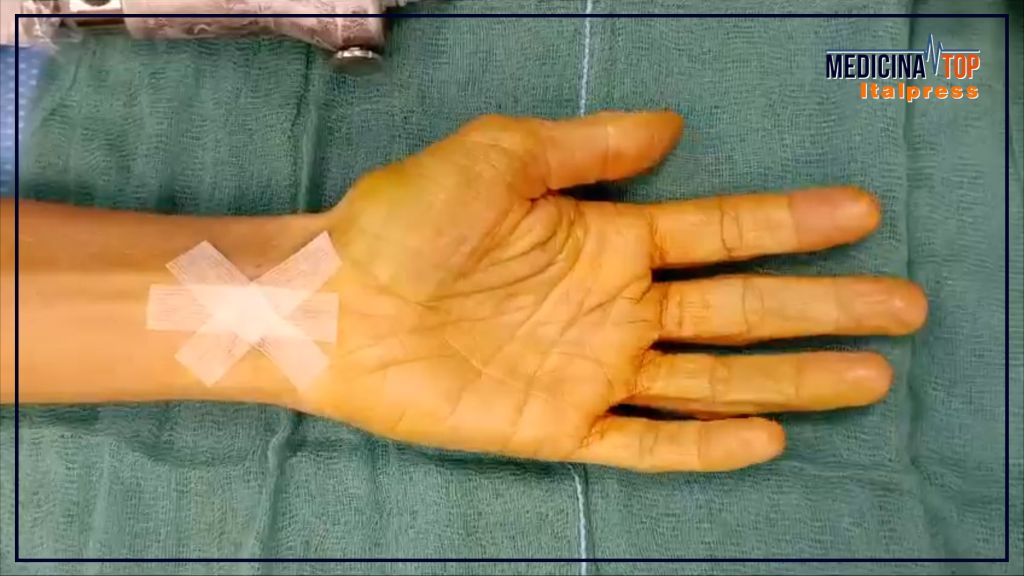MILAN (ITALPRESS) – Carpal tunnel syndrome is a medical condition caused by compression of the median nerve in the wrist, which controls the function and sensitivity of the fingers of the hand and part of the palm. Compression of this nerve can cause pain, tingling, numbness and weakness in the hands and fingers, particularly in the thumb, index and middle fingers. Carpal tunnel syndrome is often caused by repetitive wrist movements, such as those that occur in occupations that require prolonged use of keyboards or hand tools. Other causes may also include arthritis, pregnancy and obesity. Symptoms can range from mild to severe, and if left untreated tend to worsen over time. These are some of the topics discussed by Giorgio Pajardi, professor of Plastic and Reconstructive Surgery at the University of Milan, coordinator of the Rehabilitation of the Hand Master’s program at the same university and director of the MultiMedica Group’s Complex Operative Unit of Hand Surgery, interviewed by Marco Klinger, for Medicina Top, a TV format of the Italpress news agency. “Carpal tunnel syndrome is the most common pathology of the hand and peripheral nervous system,” he began, “It is related to the use of the hand that occasionally needs a little support. Among the signs, tingling is an important element; an irritated nerve gives this sensation. The problem is that nerves are very long structures that go from the marrow to the tips of the hands or feet, there can be various levels of inflammation,” the professor explained, “Initially you may also think of a form of arthrosis, then you realize that maybe the pain is localized to the first three fingers of the hand. There are very rare congenital forms, which we even have in children and teens. From the thirties onward it’s widespread, but it’s in no way related to hormonal phenomena. And it is rarely related to trauma.” On how to arrive at a diagnosis of carpal tunnel syndrome: “The family doctor remains fundamental, we specialists have to realize that,” Pajardi pointed out, “The patient may have several pathologies. The main examination is electromyography: neurophysiologists are our close colleagues in this regard. A useful addition introduced in recent years is also nerve ultrasound.” The main treatment of this condition is endoscopic surgery: “It tends to be bilateral, like spectacle lenses, carpal tunnel syndrome tends to be bilateral,” he pointed out. “A patient treated in one hand is also treated in the other, and the surgery takes only a few minutes. It is one of those surgeries whose cost-benefit ratio is significant. You go back to sleeping, buttoning your shirt, playing sports,” assured the professor. “The fact of the advent of the endoscopic technique, which is now 34 years old, makes it possible in some cases even to treat both hands at the same time, but it should not be understood as a shortcut to get well sooner. “The patient after surgery has a free hand, he is autonomous, of course we recommend not to drive on the same day, but he has total autonomy,” reiterated Pajardi. “There is no such thing as a completely safe surgery, relying on a hand surgery specialist is essential, and being followed by a hand therapist postoperatively means putting yourself in the best condition. In some cases, however, it is also possible to avoid surgery: “There is no real prevention, nowadays, however, we are greatly favored because there is a culture of ergonomics that helps us a lot,” he concluded, “And when there is an initial form, or in other specific cases such as in the pregnant patient, we will go and put a position brace and do therapy without the surgery.
– photo taken from Top Medicine video -(ITALPRESS).

